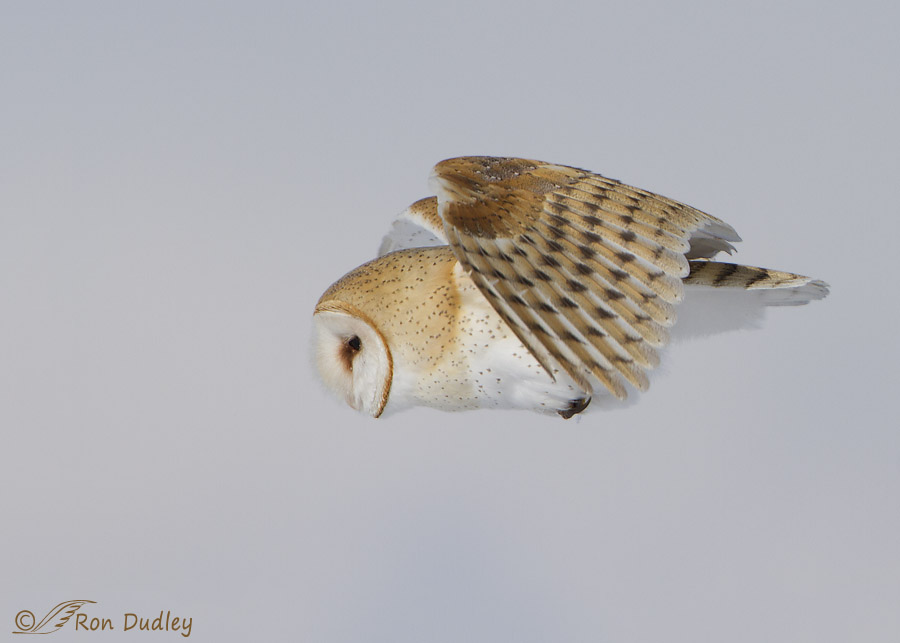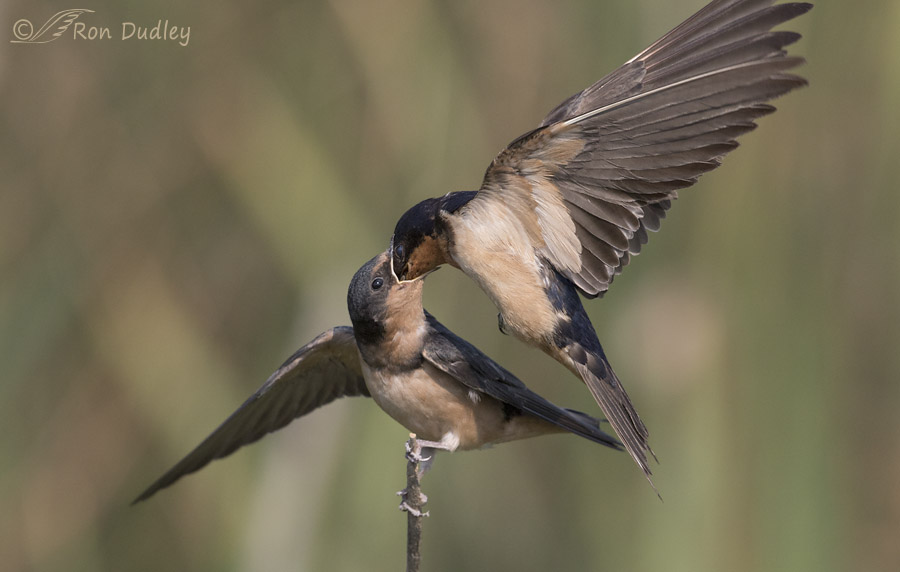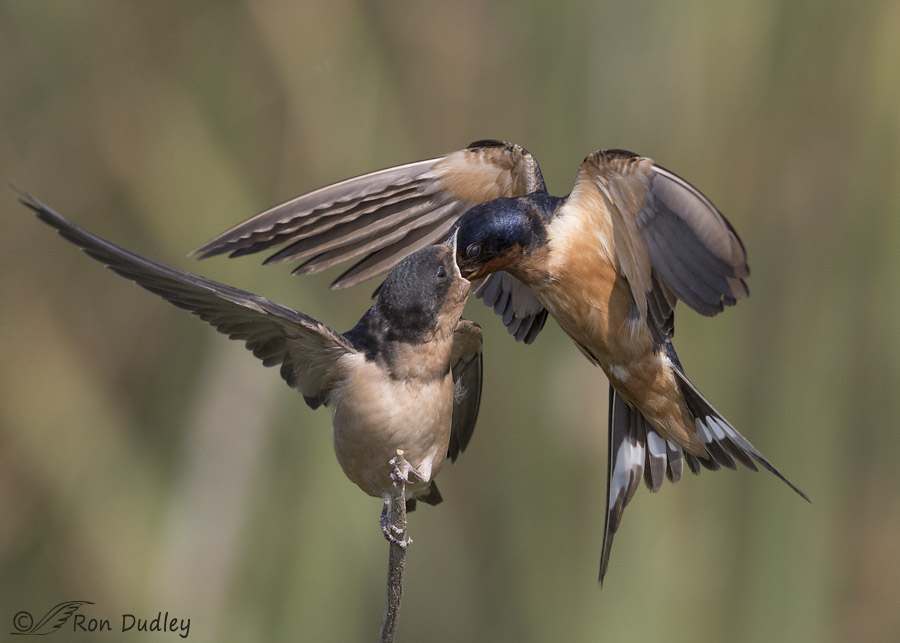Category: Barn Swallows
Barn Swallows – Feeding Their Fledglings Isn’t An Exact Science
Barn Owl In Flight (and hopes for a white Christmas)

I don’t have many Christmassy-looking images to accompany my heart-felt wishes that all of my readers have a joyous holiday with family and loved ones so this Barn Owl in flight against a snowy backdrop will just have to do. I thought about cloning a red Santa hat onto the head of the bird but that thought was a fleeting one because I just couldn’t bring myself to do that to the owl.
Barn Swallow
I’ve always had a “thing” for Barn Swallows. I’m sure it goes back to my childhood on the family farm in Montana where they nested in huge numbers on and in all of the many old barns, granaries and outbuildings. As a kid I spent many hours watching their graceful flight with their long forked tail and pointed wings being quite distinctive. Another thing (besides the fond memories) that I’m indebted to them for is that the species indirectly led to the beginning of the conservation movement in the United States. The destruction of Barn Swallows for the millinery trade (those long tail feathers were apparently considered very attractive on the hat of a lady) during the 1800’s led to George Bird Grinnell’s article in Forest and Stream in 1886 that prompted the founding of the first Audubon Society. Hooray for Barn Swallows ! I think the way they’ve adapted to man is fascinating. They’re now the most abundant and widely distributed swallow in the world and originally they nested almost exclusively in caves but with the advent of human structures that has changed dramatically. They have almost completely converted to nesting in or on man-made structures like bridges, culverts and the eaves of buildings. In fact, in modern times any Barn Swallows found nesting on natural sites create quite a stir among birders and are often reported with much interest. 1/640, f/8, ISO 500, 500 f/4, 1.4 tc, natural light But I must admit that I also enjoy them in natural settings. I found this bird at Bear River MBR where…



